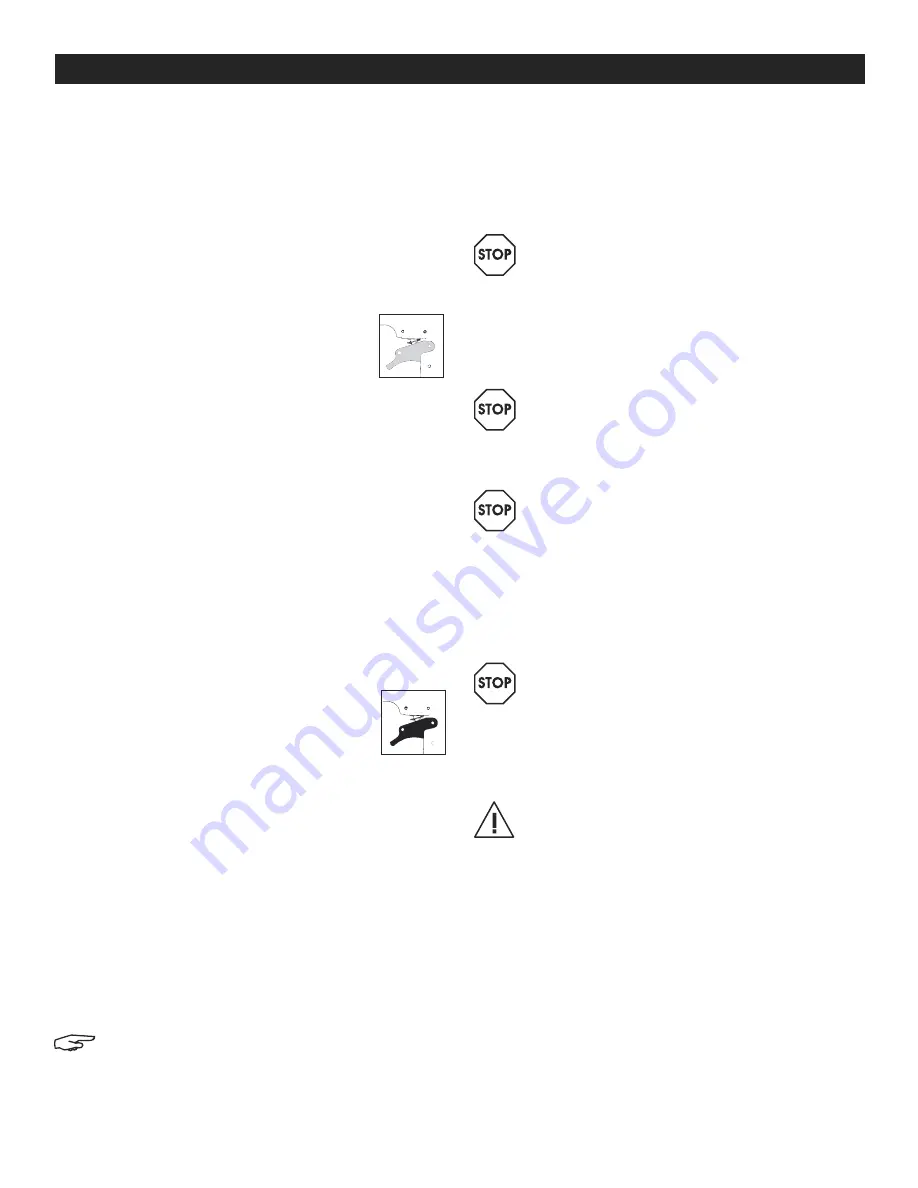
PAGE 5 OF 27
0421 IH-8726
OPERATION CONTINUED
OPERATION MODES
There are two types of triggers for pneumatic tools:
Sequential Trip (gray trigger) and Contact Trip (black
trigger). Each trigger has specific advantages. Evaluate
particular construction project to determine which
trigger is best.
This tool was shipped from the factory in the Sequential
Trip (gray trigger) configuration. It can easily be converted
to the Contact Trip (black trigger) mode of operation.
1. SEQUENTIAL TRIP OPERATION
(GRAY TRIGGER)
The Sequential Trip (gray trigger) gets its name
from the "sequence" required to drive a fastener. To
drive a fastener, the operator must first depress the
"trip" fully against the work surface and then pull the
trigger. To drive a second nail, the operator must lift the
tool from the work surface, release the trigger and then
repeat the above sequence.
a.
The Sequential Trip (gray trigger)
offers a positive
safety advantage since it will not accidentally
drive a fastener if the tool is bumped against any
surface or anybody while the operator is holding
the tool with trigger pulled.
b.
The Sequential Trip (gray trigger)
allows "place
nailing" without the possibility of driving a
second, unwanted fastener on recoil as
described below under "Contact Trip".
2. CONTACT TRIP OPERATION
(BLACK TRIGGER)
Your new tool can be configured for use in
Contact Trip mode. To drive a nail, the
"trip" and the trigger must both be depressed. In
Contact Trip tools, the trigger may be depressed and
held, and each "contact" between trip and work
surface will drive a nail.
a.
SINGLE FASTENER PLACEMENT (Place Nailing) –
First position the "trip" fully on the work surface
without pulling the trigger. Depress the "trip"
FULLY until the nose of the tool touches the work
surface and then pull the trigger to drive a nail.
Do not press the tool against the work surface
with extra force. Instead, allow the tool to recoil
off the work surface to avoid a second unwanted
fastener.
NOTE: Remove your finger from the trigger after
each operation.
b.
RAPID FIRE OPERATION (
"
Bump
"
Nailing) –
First,
hold the tool with the "trip" pointing towards but
not touching the work surface. Pull the trigger
and then tap or "bump" the trip against the work
surface using a bouncing motion. Each depression
of the "trip" will cause a nail to be driven.
WARNING! The Contact Trip (black) will not
prevent a nail from being accidently driven
if the trigger is depressed and the
"
trip
"
is
bumped against any object or person. Never
hold or carry the tool with your finger on the
trigger. Only depress and hold trigger when
you intend to rapidly drive multiple nails and
the tool is pointed at the work surface.
WARNING! Never use contact trigger (black
trigger) with metal connector attachment.
Only use sequential trigger (grey trigger) with
metal connector attachment. Refer to trigger
conversion instruction included in the kit.
WARNING! When using conventional Contact
Trip for Place Nailing, the tool may bounce due
to recoil and if the tool is allowed to re-contact
the work surface while you are holding the
trigger pulled, a second unwanted nail will be
driven. You should allow the tool to recoil far
enough to release the trip and avoid a second
cycle. Don't push the tool down extra hard; let
the tool do the work.
WARNING! Operator must not hold the trigger
pulled on contact trip tools, except during
fastening operation, as serious injury could
result if the trip accidentally contacted
someone or something, causing the tool to cycle.
TOOL OPERATION CHECK
CAUTION! Remove all fasteners from tool before
performing tool operation check.
1. SEQUENTIAL TRIP OPERATION
a. Press the contact trip against the work surface
without touching the trigger.
The tool must not
cycle.
b. Hold the tool off the work surface and pull the
trigger.
The tool must not cycle.
Release the
trigger. The trigger must return to the trigger stop
on the frame.
c. Pull the trigger and press the contact trip against
the work surface.
The tool must not cycle.
d. With finger off the trigger, press the contact trip
against the work surface. Pull the trigger.
The tool must not cycle.




































